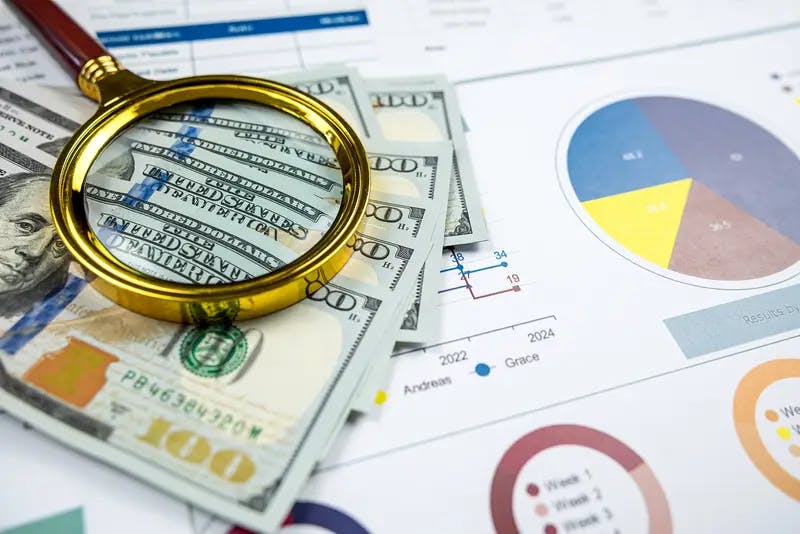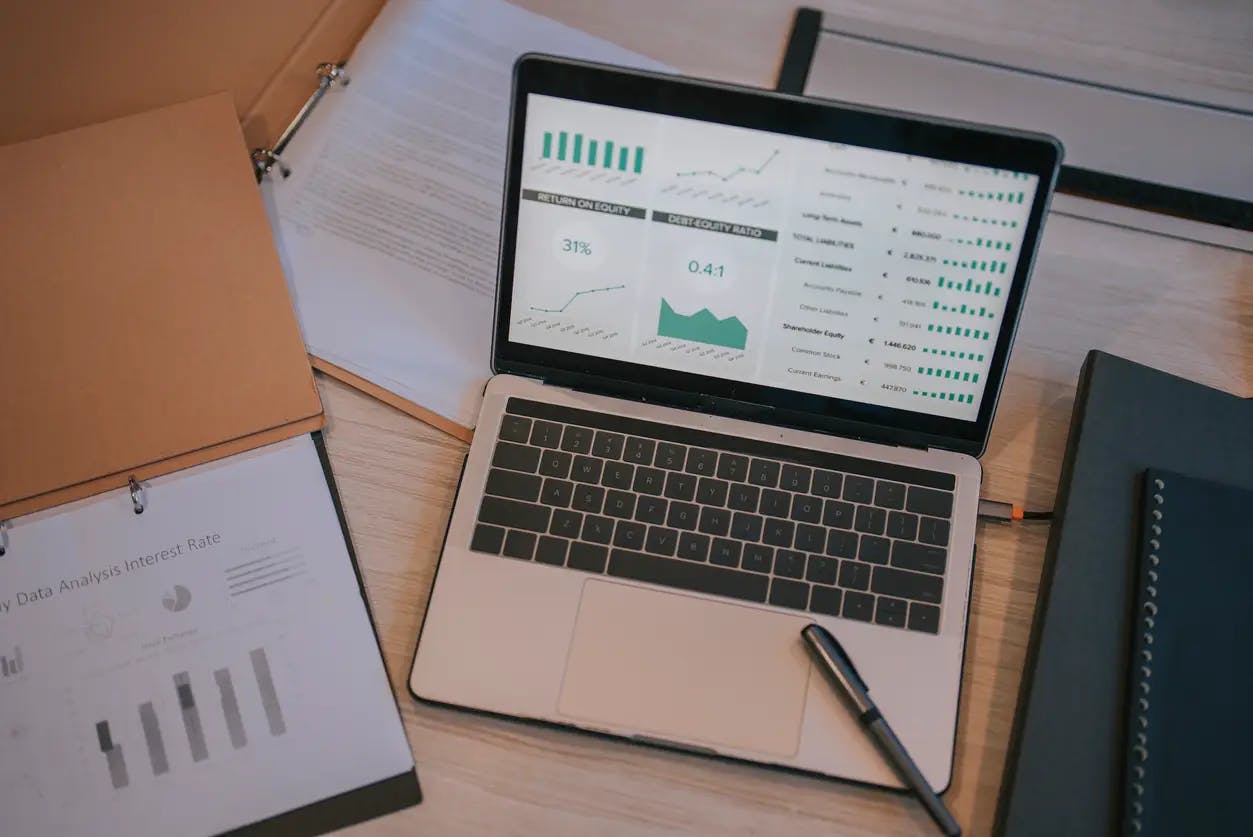Creating a Visual Budget
by
Fri Feb 09 2024

Creating a budget is a great start, but what about sticking to the budget and meeting your goals? You are more likely to stay with your plan when you can visually see the impact made by your dedication.
Using pie charts and graphs for tracking expenses not only simplifies the process but also makes it more engaging. Find motivation through the visual satisfaction of paying down debt and increasing your savings. We are here to guide you through the process of visual budgeting.
The Power of Visual Budgeting
Visual budgeting transforms numbers and categories into visual representations, making it easier to understand your financial habits. By converting your expenses into pie charts and graphs, you can quickly identify areas where you might be overspending and adjust accordingly.
This method is especially effective for those who find traditional spreadsheets and numbers daunting. What is your learning style? If you think a visual representation of your budget will be beneficial, you are in the right place.
The Basics of Pie Charts and Graphs
What are the differences between pie charts and graphs, and how can you implement the graphs into your budgeting plan? Let’s break it down.
Pie Charts: A pie chart represents data in a circular graph where each category of expense is a slice of the pie. The size of each slice is proportional to the expense it represents, making it a quick and intuitive way to view your spending distribution.
Graphs: There are several types of graphs, but bar graphs and line graphs are particularly useful for budgeting. Bar graphs are great for comparing different categories of expenses, while line graphs can track spending or savings over time.
Step-by-Step Guide to Creating Your Visual Budget
1. Gather Your Financial Data: Start by collecting data on your income and expenses. This data can come from bank statements, receipts, or any personal finance app you use.
2. Categorize Your Expenses: Divide your expenses into meaningful categories such as groceries, utilities, entertainment, and savings.
3. Choose Your Tool: You can use various tools to create your visual budget, from traditional software like Microsoft Excel and Google Sheets to more specialized budgeting apps that automatically generate graphs and charts.
4. Creating a Pie Chart: In Excel or Google Sheets, input your categorized expense data.
- Select your data and choose the ‘Pie Chart’ option.
- Customize your chart with labels and colors for better clarity.
5. Creating a Bar Graph or Line Graph:
- Input your expense data, categorizing it by month or week.
- Select the data and choose either ‘Bar Graph’ or ‘Line Graph’.
- Customize your graph by adjusting the axes, labels, and colors.
6. Analyze Your Spending: Study your charts and graphs to identify trends in your spending. Look for areas where expenses are higher than expected.
7. Set Goals and Adjust Budgets: Based on your analysis, set realistic spending goals for each category. Adjust your budget to align with these goals.
Excel vs. Google Sheets: Which Is the Better Budgeting Tool?
Which Is the Better Budgeting Tool?

The Benefits of Visual Budgeting
Whether you are a visual learner or not, visual budgeting may take your motivation to the next level. As you watch the graph change according to your efforts, you will be more willing to stay disciplined.
- Immediate Understanding: Visual representations allow for quicker comprehension of complex data. A glance at a colorful pie chart can provide insights that might be missed in a spreadsheet.
- Spending Pattern Recognition: Graphs and charts make it easier to spot trends over time, such as seasonal increases in utility bills or a gradual rise in entertainment expenses.
- Enhanced Motivation: Visual progress, such as a growing savings slice in your pie chart, can be a powerful motivator.
- Simplicity and Accessibility: Visual budgets are more accessible, especially for those intimidated by numbers and complex financial jargon.
Tips for Effective Visual Budgeting
There isn’t one way to include visual graphs in your budgeting plans. But when you follow these tips, you can access the most benefits from your visual budgeting efforts.
- Keep It Updated: Regularly update your charts and graphs to reflect your current financial situation.
- Be Consistent with Categories: Consistency in categorizing expenses ensures accuracy in your visual representations.
- Use Colors Wisely: Different colors for different categories can make your charts more readable and engaging.
- Review Regularly: Set a regular schedule to review your visual budget to stay on track with your financial goals.
Advanced Techniques in Visual Budgeting
Use your knowledge of graphs in other areas to maximize your budgeting plan. For those comfortable with basic charts and graphs, explore advanced techniques like:
Stacked Bar Graphs: These can show how different spending categories make up the total expenses each month. Identify the areas you can cut back when you see the majority of your discretionary spending is spent on Starbucks or gas station snacks.
Trend Lines in Line Graphs: Adding a trend line can help forecast future spending or savings trends. Celebrate trends that fall in your favor, highlighting your saving efforts.
Common Pitfalls to Avoid
Some small mistakes may keep you from sticking to your budget. Be prepared to avoid these common pitfalls:
- Overcomplicating Your Visuals: Keep your charts simple. Overloading them with data can make them as challenging to understand as a spreadsheet.
- Ignoring Small Expenses: Small expenses can add up. Make sure they are represented in your charts.
- Neglecting to Adjust for Changes: Your budget is dynamic. Regularly adjust your charts to reflect life changes, income fluctuations, or new financial goals.
Integrate Visual Budgeting into Your Frugal Lifestyle
Visual budgeting can contribute to your frugal living goals. Create a visual budget that aligns with your frugal lifestyle, and have fun with it! Monitoring every expense can feel tedious, but if you do it in a way that’s visually motivating, you will enjoy the journey.
Creating a visual budget using pie charts and graphs is a powerful tool in your financial toolkit. It simplifies the process of tracking expenses, makes budgeting more engaging, and can lead to more informed financial decisions. Whether you are new to budgeting or looking to enhance your current system, visual budgeting can be a game-changer in your journey toward a more frugal and financially secure life.
